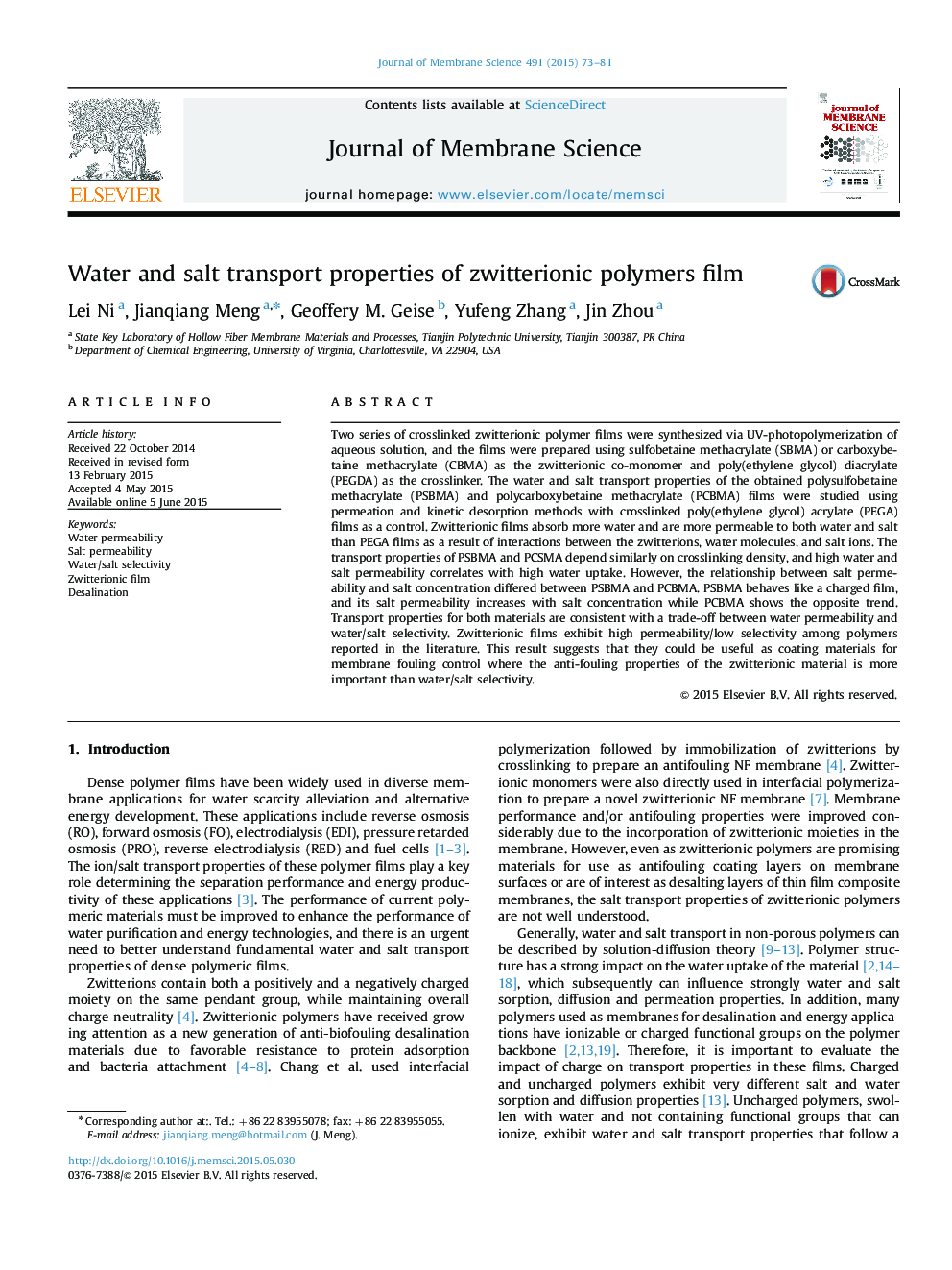| Article ID | Journal | Published Year | Pages | File Type |
|---|---|---|---|---|
| 632985 | Journal of Membrane Science | 2015 | 9 Pages |
•Zwitterionic polymer films were prepared by UV-photopolymerization.•Zwitterionic films absorb more water and are more permeable than PEGA film.•High water and salt permeability correlates with high water uptake.•PSBMA behaves like a charged film while PCBMA shows the opposite trend.•Zwitterionic films exhibit high permeability/low selectivity.
Two series of crosslinked zwitterionic polymer films were synthesized via UV-photopolymerization of aqueous solution, and the films were prepared using sulfobetaine methacrylate (SBMA) or carboxybetaine methacrylate (CBMA) as the zwitterionic co-monomer and poly(ethylene glycol) diacrylate (PEGDA) as the crosslinker. The water and salt transport properties of the obtained polysulfobetaine methacrylate (PSBMA) and polycarboxybetaine methacrylate (PCBMA) films were studied using permeation and kinetic desorption methods with crosslinked poly(ethylene glycol) acrylate (PEGA) films as a control. Zwitterionic films absorb more water and are more permeable to both water and salt than PEGA films as a result of interactions between the zwitterions, water molecules, and salt ions. The transport properties of PSBMA and PCSMA depend similarly on crosslinking density, and high water and salt permeability correlates with high water uptake. However, the relationship between salt permeability and salt concentration differed between PSBMA and PCBMA. PSBMA behaves like a charged film, and its salt permeability increases with salt concentration while PCBMA shows the opposite trend. Transport properties for both materials are consistent with a trade-off between water permeability and water/salt selectivity. Zwitterionic films exhibit high permeability/low selectivity among polymers reported in the literature. This result suggests that they could be useful as coating materials for membrane fouling control where the anti-fouling properties of the zwitterionic material is more important than water/salt selectivity.
